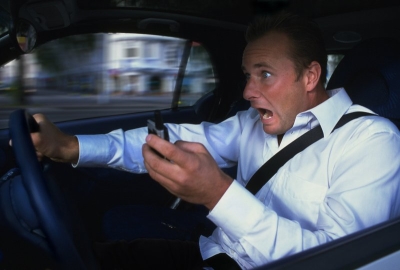What Is Implied By The Term Defensive Driving

“Defensive Driving” is an Australian concept of driving. Malaysia has converted from formerly following British method of driving to the more modern defensive driving system as advocated by Australia.
In short, “defensive” driving is driving safely and trying not to be involved in accidents. Following traffic rules, road signs and other regulations which pertains to driving are all good habits which assists a driver to avoid being involved in an accidents, is in reality “defensive” form of driving.
Pre driving checks which a driver makes upon tyres, brakes and other mechanical aspects, prior to his going on a long distance journey, tantamount to preventing accidents from taking place. This in a way, is part of defensive driving.
Planning our journey, the time of departure, where we intent to stop along our way in order to rest, all adds up in helping a driver avoid accidents.
Ensuring enough time is allocated for the “journey” eliminates a driver “fighting” against time. This creates a “tension free” atmosphere for the driver. Eventually, a safer journey is this achieved.
Realising a long, hard journey ahead early the next morning, a driver goes to bed early, anticipating a good night’s rest.
He wants to be “alert”, as he knows a tired driver makes a bad driver and accidents can happen because of it.
At times, while traveling along the highway, we see a driver heading straight in our direction. As an alert driver, you have to do something about it.
We have to assume something is amiss. Flash your head lights. The driver might have “dozed” off for all you know. Or he might be concentrating on something important to the extent of neglecting his driving.
The worse scenario is for you to pull over to the sidewalk, thus averting an imminent accident taking place.
Driving along a highway, it’s a normal thing for motorist to drive over 110 km/h. This is Malaysia’s maximum speed permissible. As we approach a toll booth ahead of us, we observe a long que at the booth ahead.
A good driver will instinctively react by reducing his speed in preparation to slow down and eventually pay his tolls due.
A good, defensive driver knows his duty is to approach a toll booth with a speed of no more than 60 km/h. As such, incidents of drivers ramming into toll booths due to brakes failure and excessive speeds should in fact not arise at all.
In “defensive driving” we as good drivers should be on the “alert” at all times. We as drivers can cause accidents occasionally. At the same time, do not forget that we can also play a part to prevent accidents from taking place just as well.
If only more drivers adopt to the defensive form of driving, it is most certain, without a doubt, there will be fewer road accidents happening.

At last I found a blog where I can say something about Malaysian drivers. I am glad I find your blog. I think it is very good and I thank you for it.
I have had lived in Australia for 20 years and had traveled in Europe but not in Asian countries except Singapore. I’m really appalled at the Malaysian drivers. I believe Malaysian drivers rank among top 5 worst drivers among the countries in the world. That is why accidents and deaths on the road are among the highest (the authority dare not to admit and Malaysian always think we are ‘not bad’).
My point is we should improve our way of living. And driving is one them. In fact driving should be the top priority to improve our way of living as a country. After all the government (since Dr. Mahathir’s era) wants Malaysia to be a First country. And driving involves all the citizens.
The concept of ‘Defensive Driving’ has been introduced in Australia for many years and Australia has very low accident rates. This is what we should emulate. It should start with the instructors first. If the instructors themselves do not know what ‘Defensive Driving’ is, how can the new drivers be good drivers.
Your comment is much appreciated.
Hi Cikgu Yap,
Could you kindly advise if you provide defensive driving courses? If yes, what are the courses outline, fees and arrangements are like?
Thanks and looking forward to hear from you.
Regards,
Jess
Will contact your email.
Greetings Cikgu Yap and Will Yap,
What a nice thing to do for your father, Will Yap. A good example you have shown here and I believe this blog has helped many people out there. Loving the features of this blog since it looks simple and organised yet full of information.
Btw, I am writing to ask some questions about the driving licence. Currently, I have my L licence for class D and gone through the 10 hours driving class. I also have done my QTI test but it was in January 2014 (not sure whether it is still valid now). Previously my driving school was in JB and while waiting for my JPJ test, I was offered a job in KL. Unfortunately, I was not able to attend my JPJ test scheduled in JB and cancelled it.
I live in Kampung Baru and my L licence is reaching 2 years soon which will expire this coming January 2016. Am looking for a driving school to finish my JPJ test and get my P licence soonest possible. Really hope you can suggest me any driving school in KL area that will provide the service with an affordable price. Also, might be helpful if you could tell me what is the lowest price range that I can get to complete my licence.
Thank you so much for your kind attention and time.
Regards,
Nazirah